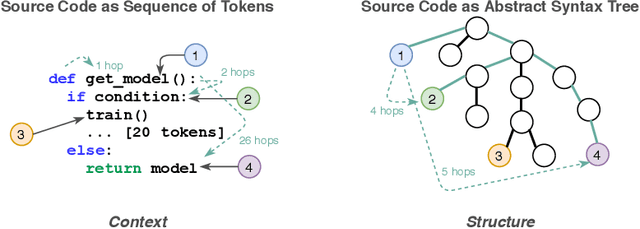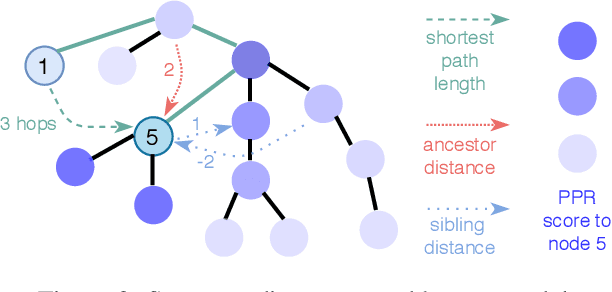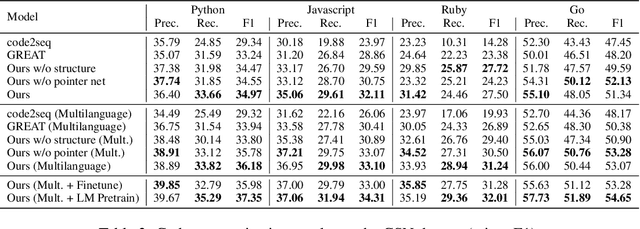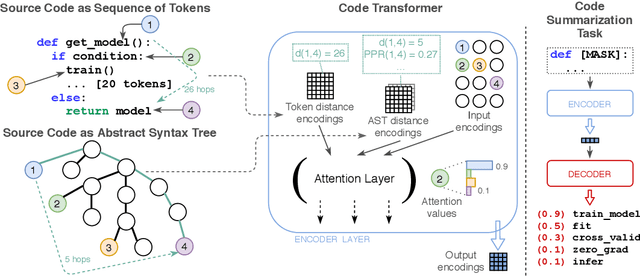Michele Catasta
Hybrid Forecasting of Geopolitical Events
Dec 14, 2024



Abstract:Sound decision-making relies on accurate prediction for tangible outcomes ranging from military conflict to disease outbreaks. To improve crowdsourced forecasting accuracy, we developed SAGE, a hybrid forecasting system that combines human and machine generated forecasts. The system provides a platform where users can interact with machine models and thus anchor their judgments on an objective benchmark. The system also aggregates human and machine forecasts weighting both for propinquity and based on assessed skill while adjusting for overconfidence. We present results from the Hybrid Forecasting Competition (HFC) - larger than comparable forecasting tournaments - including 1085 users forecasting 398 real-world forecasting problems over eight months. Our main result is that the hybrid system generated more accurate forecasts compared to a human-only baseline which had no machine generated predictions. We found that skilled forecasters who had access to machine-generated forecasts outperformed those who only viewed historical data. We also demonstrated the inclusion of machine-generated forecasts in our aggregation algorithms improved performance, both in terms of accuracy and scalability. This suggests that hybrid forecasting systems, which potentially require fewer human resources, can be a viable approach for maintaining a competitive level of accuracy over a larger number of forecasting questions.
* 20 pages, 6 figures, 4 tables
PaLM 2 Technical Report
May 17, 2023



Abstract:We introduce PaLM 2, a new state-of-the-art language model that has better multilingual and reasoning capabilities and is more compute-efficient than its predecessor PaLM. PaLM 2 is a Transformer-based model trained using a mixture of objectives. Through extensive evaluations on English and multilingual language, and reasoning tasks, we demonstrate that PaLM 2 has significantly improved quality on downstream tasks across different model sizes, while simultaneously exhibiting faster and more efficient inference compared to PaLM. This improved efficiency enables broader deployment while also allowing the model to respond faster, for a more natural pace of interaction. PaLM 2 demonstrates robust reasoning capabilities exemplified by large improvements over PaLM on BIG-Bench and other reasoning tasks. PaLM 2 exhibits stable performance on a suite of responsible AI evaluations, and enables inference-time control over toxicity without additional overhead or impact on other capabilities. Overall, PaLM 2 achieves state-of-the-art performance across a diverse set of tasks and capabilities. When discussing the PaLM 2 family, it is important to distinguish between pre-trained models (of various sizes), fine-tuned variants of these models, and the user-facing products that use these models. In particular, user-facing products typically include additional pre- and post-processing steps. Additionally, the underlying models may evolve over time. Therefore, one should not expect the performance of user-facing products to exactly match the results reported in this report.
Measuring The Impact Of Programming Language Distribution
Feb 03, 2023



Abstract:Current benchmarks for evaluating neural code models focus on only a small subset of programming languages, excluding many popular languages such as Go or Rust. To ameliorate this issue, we present the BabelCode framework for execution-based evaluation of any benchmark in any language. BabelCode enables new investigations into the qualitative performance of models' memory, runtime, and individual test case results. Additionally, we present a new code translation dataset called Translating Python Programming Puzzles (TP3) from the Python Programming Puzzles (Schuster et al. 2021) benchmark that involves translating expert-level python functions to any language. With both BabelCode and the TP3 benchmark, we investigate if balancing the distributions of 14 languages in a training dataset improves a large language model's performance on low-resource languages. Training a model on a balanced corpus results in, on average, 12.34% higher $pass@k$ across all tasks and languages compared to the baseline. We find that this strategy achieves 66.48% better $pass@k$ on low-resource languages at the cost of only a 12.94% decrease to high-resource languages. In our three translation tasks, this strategy yields, on average, 30.77% better low-resource $pass@k$ while having 19.58% worse high-resource $pass@k$.
Natural Language to Code Generation in Interactive Data Science Notebooks
Dec 19, 2022



Abstract:Computational notebooks, such as Jupyter notebooks, are interactive computing environments that are ubiquitous among data scientists to perform data wrangling and analytic tasks. To measure the performance of AI pair programmers that automatically synthesize programs for those tasks given natural language (NL) intents from users, we build ARCADE, a benchmark of 1082 code generation problems using the pandas data analysis framework in data science notebooks. ARCADE features multiple rounds of NL-to-code problems from the same notebook. It requires a model to understand rich multi-modal contexts, such as existing notebook cells and their execution states as well as previous turns of interaction. To establish a strong baseline on this challenging task, we develop PaChiNCo, a 62B code language model (LM) for Python computational notebooks, which significantly outperforms public code LMs. Finally, we explore few-shot prompting strategies to elicit better code with step-by-step decomposition and NL explanation, showing the potential to improve the diversity and explainability of model predictions.
PaLM: Scaling Language Modeling with Pathways
Apr 19, 2022



Abstract:Large language models have been shown to achieve remarkable performance across a variety of natural language tasks using few-shot learning, which drastically reduces the number of task-specific training examples needed to adapt the model to a particular application. To further our understanding of the impact of scale on few-shot learning, we trained a 540-billion parameter, densely activated, Transformer language model, which we call Pathways Language Model PaLM. We trained PaLM on 6144 TPU v4 chips using Pathways, a new ML system which enables highly efficient training across multiple TPU Pods. We demonstrate continued benefits of scaling by achieving state-of-the-art few-shot learning results on hundreds of language understanding and generation benchmarks. On a number of these tasks, PaLM 540B achieves breakthrough performance, outperforming the finetuned state-of-the-art on a suite of multi-step reasoning tasks, and outperforming average human performance on the recently released BIG-bench benchmark. A significant number of BIG-bench tasks showed discontinuous improvements from model scale, meaning that performance steeply increased as we scaled to our largest model. PaLM also has strong capabilities in multilingual tasks and source code generation, which we demonstrate on a wide array of benchmarks. We additionally provide a comprehensive analysis on bias and toxicity, and study the extent of training data memorization with respect to model scale. Finally, we discuss the ethical considerations related to large language models and discuss potential mitigation strategies.
Language-Agnostic Representation Learning of Source Code from Structure and Context
Mar 21, 2021



Abstract:Source code (Context) and its parsed abstract syntax tree (AST; Structure) are two complementary representations of the same computer program. Traditionally, designers of machine learning models have relied predominantly either on Structure or Context. We propose a new model, which jointly learns on Context and Structure of source code. In contrast to previous approaches, our model uses only language-agnostic features, i.e., source code and features that can be computed directly from the AST. Besides obtaining state-of-the-art on monolingual code summarization on all five programming languages considered in this work, we propose the first multilingual code summarization model. We show that jointly training on non-parallel data from multiple programming languages improves results on all individual languages, where the strongest gains are on low-resource languages. Remarkably, multilingual training only from Context does not lead to the same improvements, highlighting the benefits of combining Structure and Context for representation learning on code.
Open Graph Benchmark: Datasets for Machine Learning on Graphs
May 02, 2020



Abstract:We present the Open Graph Benchmark (OGB), a diverse set of challenging and realistic benchmark datasets to facilitate scalable, robust, and reproducible graph machine learning (ML) research. OGB datasets are large-scale, encompass multiple important graph ML tasks and cover a diverse range of domains, ranging from social and information networks to biological networks, molecular graphs, and knowledge graphs. For each dataset, we provide a unified evaluation protocol using application-specific data splits and evaluation metrics. Our empirical investigation reveals the challenges of existing graph methods in handling large-scale graphs and predicting out-of-distribution data. OGB presents an automated end-to-end graph ML pipeline that simplifies and standardizes the process of graph data loading, experimental setup, and model evaluation. OGB will be regularly updated and welcomes inputs from the community. OGB datasets as well as data loaders and evaluation scripts are available at https://ogb.stanford.edu .
 Add to Chrome
Add to Chrome Add to Firefox
Add to Firefox Add to Edge
Add to Edge